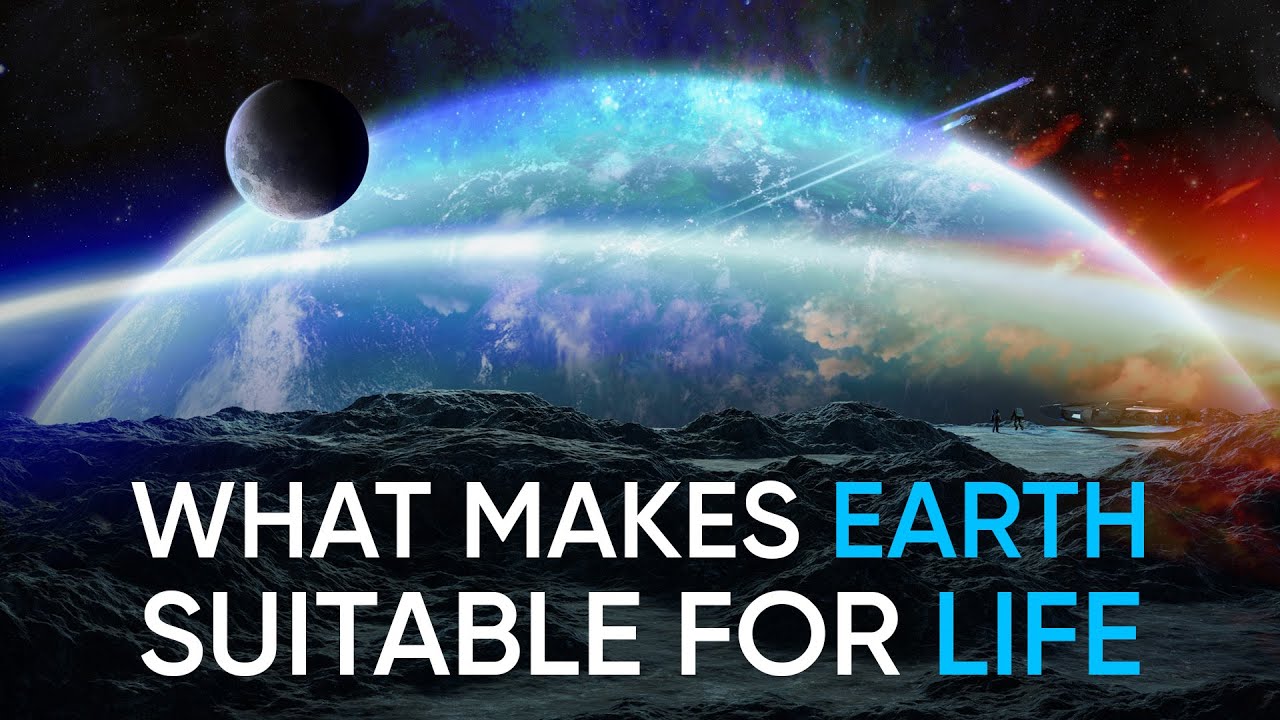Earth 101 | National Geographic
Summary
TLDRThis script narrates Earth's unique role as the cradle of life, formed from the sun's leftover particles 4.5 billion years ago. It highlights Earth's optimal distance from the sun, which sustains liquid water—crucial for life's emergence and sustenance. The video explores Earth's geological composition, its diverse ecosystems, and the expansive biodiversity that has evolved over billions of years, emphasizing Earth's singularity in hosting life amidst the vast cosmos.
Takeaways
- 🌏 Earth is the only known planet to support life, a product of scientific phenomena and chance.
- 🚀 The Earth formed approximately 4.5 billion years ago from particles left over from the creation of the sun.
- 🌌 Earth's structure includes a solid inner core, a liquid outer core, a mantle of silicate rocks, and a rocky crust.
- ☀️ Positioned as the third planet from the sun, Earth orbits at an optimal distance of about 93 million miles, allowing for a temperate climate.
- 💧 Earth is unique in having liquid surface water, which is essential for life and contributes to its biodiversity.
- 🌊 Earth's water cycle supports life by hydrating the land, forming oceans and freshwater systems, and adding moisture to the atmosphere.
- 🗓️ Earth's water is theorized to be as old as its rocks, having formed during the earliest days of the planet.
- 🌿 Liquid water on Earth's surface has a cascading effect, creating nutrient-rich soil and supporting a diverse ecosystem.
- 🦠 Life on Earth began around 3.8 billion years ago with primitive microbial organisms in the oceans.
- 🌳 Earth's biodiversity is vast, with an estimated 1.5 million cataloged species and potentially millions more to be discovered.
- 🌈 Earth's ecosystem is a grand and complex system, influenced by astronomical events and the presence of water.
Q & A
How did the Earth form and what materials were involved in its formation?
-The Earth formed approximately 4.5 billion years ago from particles left over from the creation of the sun. Gravity drew these particles together, forming pebbles which then formed boulders, and eventually, the Earth.
What is the structure of Earth's core and what layers does it consist of?
-At the heart of the Earth is a solid inner core, which is covered by a liquid outer core. Above this sits the mantle, made of flowing silicate rocks, and on top of that is the rocky crust.
What is Earth's average distance from the sun and how does this distance affect its temperature?
-Earth orbits the sun from an average distance of about 93 million miles. This distance is close enough to be warm, unlike the cold gas giants, but not so close that its surface is exposed to extreme heat and solar radiation.
Why is Earth's position in the solar system considered unique?
-Earth's unique position in the solar system allows it to house phenomena yet to be found anywhere else in the universe, particularly liquid surface water and life.
What is the significance of liquid water on Earth and how does it affect the planet?
-Liquid water on Earth has unique cascading effects. It hydrates the land, helping create nutrient-rich soil, forms oceans and freshwater systems, and cycles upward to add moisture to Earth's protective atmosphere.
When did life first appear on Earth and what form did it take?
-Primitive life in the form of microbial organisms existed in Earth's oceans about 3.8 billion years ago, which over billions of years gave rise to a range of more advanced life forms.
What is the estimated number of species on Earth and how does this reflect its biodiversity?
-An estimated 1.5 million species of plants, animals, bacteria, fungi, and others have been cataloged, with potentially millions, if not billions more yet to be discovered, reflecting Earth's expansive biodiversity.
What theory suggests about the age of Earth's water in relation to its rocks?
-One theory suggests that much of Earth's water is as old as its rocks, both of which having formed during the Earth's earliest days.
How does Earth's distance from the sun influence the presence of water in its different forms?
-Because of Earth's unique distance from the sun, the planet is able to contain water in all of its forms—liquid, ice, and gas—rather than having them permanently frozen or evaporated into space.
Why is Earth the only known place in the universe with liquid water on its surface?
-Earth's unique position in the solar system and its specific environmental conditions allow for the presence of liquid water on its surface, a phenomenon not yet found elsewhere in the universe.
How does the presence of liquid water contribute to the development of life on Earth?
-The presence of liquid water provides the necessary conditions for life, as it hydrates the land, supports the formation of nutrient-rich soil, and forms the basis of oceans and freshwater systems where life can thrive.
Outlines

This section is available to paid users only. Please upgrade to access this part.
Upgrade NowMindmap

This section is available to paid users only. Please upgrade to access this part.
Upgrade NowKeywords

This section is available to paid users only. Please upgrade to access this part.
Upgrade NowHighlights

This section is available to paid users only. Please upgrade to access this part.
Upgrade NowTranscripts

This section is available to paid users only. Please upgrade to access this part.
Upgrade Now5.0 / 5 (0 votes)





